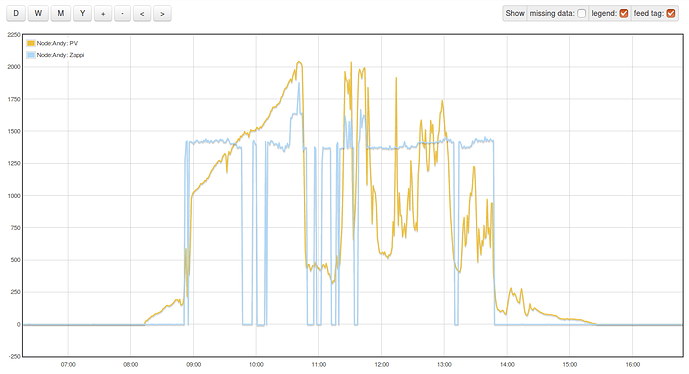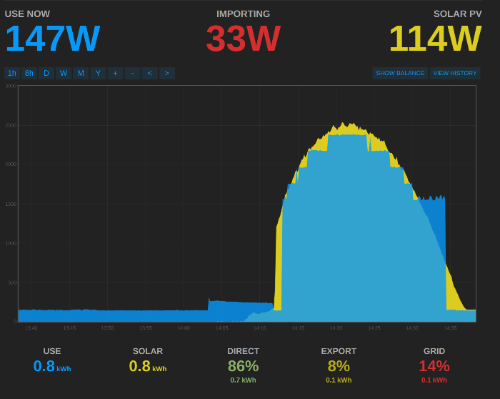Here is an Emoncms graph showing a MyEnergi Zappi in action diverting solar PV generation to change an EV:
It’s interesting to note how the Zappie switches on to start charging at 1.4kW when solar is only producing 1kW.
Another point to note is how often Zappi pauses the charging when solar PV generation drops. We decided to take a different approach with the solar PV divert algorithm in the OpenEVSE:
A decision was made when designing the algorithm for our openevse solar PV divert that once the charging started when solar PV was generating more than 6A (1.4kW) charging would then continue without being paused. The charging rate would be modulated between 6A (minimum) and the max output of the solar PV, however even when the solar drops below 6A/1.5kW charging would continue. We made this decision for two reasons: one to minimise wear on the contactors in the EVSE and the EV and two to ensure the EV receives a decent amount of charge by the end of the day. Even if solar PV is only providing 50% of the charging current it’s still better than charging at night.
See openevse example for comparison:
Reading the Zappie setup manual it’s rather clever how Zappie allows the user to set a period of time during the night (presumably off-peak) when the EV will resume charging if the EV did not receive enough energy during the day from the solar.
I’m impressed with Zappie, it’s a nice product, although not open-source! It’s great how products like Zappie and Tesla Power Wall connect together on-site generation and consumption in a smart way and engage the users in considering about their consumption in terms of available generation.
Zappie lacks the WiFi control, conductivity and Emoncms data logging features of our OpenEVSE,
Solar PV divert feature is now integrated into our OpenEVSE chargers using emonPi via MQTT for a real-time feed of solar PV / grid export:
See Solar PV divert openEVSE WiFi gateway docs:
and forum posts:

